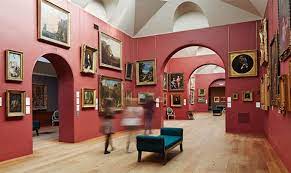The Dulwich Picture Gallery is one of the most famous and interesting art museums in England’s capital city, London. It was opened in 1817 in a building that was built by architect John Soane specifically for the gallery. The Dulwich Picture Gallery was born out of the work of two great people, the Frenchman Noël Desenfans and the painter Francis Bourgeois.
A glimpse into history
Back in 1790, the King of Poland, whose name was Stanislaus Augustus, had the idea of creating a magnificent Royal Collection of Paintings. He ordered art dealers to form it. For five years, they diligently selected paintings for the gallery. However, the year 1795 came and with it the partition of Poland. As a result, the country ceased to be an independent state, and as a result, the king abdicated the throne.
As a result, art dealers, who by that time had already amassed a royal collection, were left without a customer. They were unable to find a buyer for the entire collection at once, and they eventually decided to make it for public viewing. At that time, the National Gallery of London was not a thing of the past, and the British Museum, as believed the art dealers, was too “aristocratic.
In 1807, Noel Desenfans, who had been behind the creation of the Royal Collection of Paintings, died. After that Francis Bourgeois decided to transfer all the collected paintings to the College of Dulchwich, but with one condition: that the paintings were open to the public. So 1811 is considered the founding of the Dulwich Picture Gallery. It was then that it became the first art gallery in London open to the public.
The Dulwich Picture Gallery’s extensive collection
The Dulwich Picture Gallery exhibits works by famous painters, masters from Western Europe. The splendid collection of British painters is astonishing. Most of the gallery is made up of stunning 17th- and 19th-century canvases, but you can also see paintings from other eras. There are works by great artists such as Rembrandt, Paul Ruben, Antoine Watteau and even Raphael.
